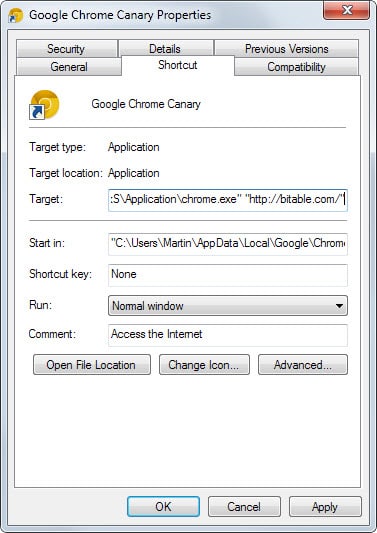New Adware method: manipulating browser shortcuts to change the home page
Whenever browser makers tighten the defense systems of the browser it does not take long usually before advertising companies and malware writers find new methods to penetrate those defense.
Some browsers display information to the user when the homepage changes while others such as Chrome may even reset settings automatically when changes are noticed.
If you have installed the most recent version of Auslogics Disk Defrag, a popular disk defragmentation software for the Windows operating system, you may have noticed that it displays an offer after installation of the core program to install something that makes Bitable.com the home page in web browsers on the system.
Set Bitable.com as the home page in your web browsers and have all your favorite websites at your fingertips every time you start your browsing session.
If you open the Bitable website you will notice that it resembles contents that are opened on a browser's new tab page by default. You find a search there, thumbnail links to popular sites, date and weather information, and some other information.
If you click continue (which means give your okay so that the program makes the change) all open browsers are closed. When you restart the browser, you may notice that the home page has changed.
The change affects popular browsers such as Chrome, Internet Explorer and Firefox at the very least and maybe other browsers as well.
If you check the browser's start page settings however you will notice that it has not been modified.

And here comes the new part and why I'm writing about it, the Bitable modification does not manipulate a browser setting, it changes only the shortcut on the system.
If you take Chrome as an example: Instead of just pointing to the chrome.exe file on the system, it adds "http://bitable.com/ at the end instructing the browser to load only this url and no other. This means no session restore and none of the usual home pages that may be loaded instead.
To find out if this is indeed the case on your computer, right-click the browser shortcut on the taskbar. Here you may find properties listed directly or after you right-click a second time on the browser name that is displayed there.
Check the target field of the properties window and if you find a url attached at the end, you are affected by this. To resolve it, remove the url at the end.
An alternative to that is to delete the shortcut with a right-click, and create a new shortcut using the start menu or a file explorer and the program directory of the browser.
Closing Words
It is likely that this method will be used by other companies as well so that this method to manipulate browser home pages will become a common issue for Internet users.
As always, it is important to read before clicks are made on buttons or links as much of this can be avoided then. If you are working in tech support or the go-to guy or girl when it comes to fixing computer problems, then this is something you may want to look in as well from now on.
This article was first seen on ComTek's "TekBits" Technology News

- Log in to post comments

